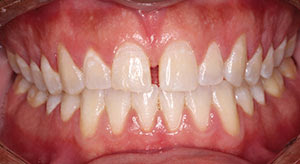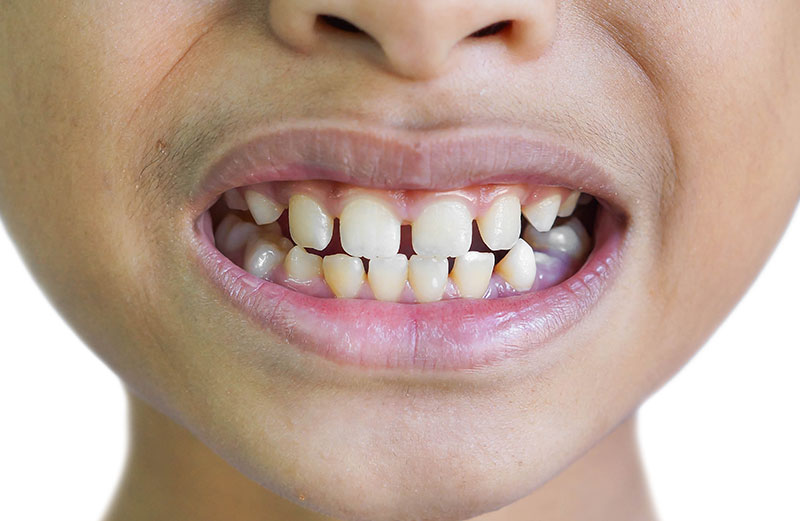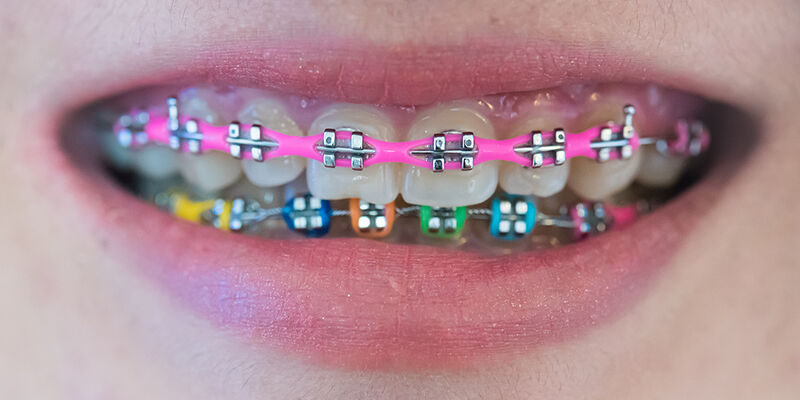Causes of midline diastema

A midline diastema is a space or gap between the two upper front teeth, also known as the central incisors. While some people find it to be a charming feature, others may consider it a cosmetic concern that they wish to correct. Understanding the causes of midline diastema is essential for determining the most effective treatment options. This comprehensive guide will explore the various factors that can lead to the development of a midline diastema, ranging from genetic predispositions to environmental influences.
Genetic Factors
One of the primary causes of midline diastema is genetics. Just like the color of your eyes or the shape of your nose, the spacing and alignment of your teeth can be inherited from your parents. If one or both parents have a diastema, it is likely that their children may also develop this trait.
Genetic Causes of Midline Diastema:
- Tooth Size and Jaw Size Discrepancy: Sometimes, the teeth may be too small for the size of the jawbone, leading to gaps between them. Conversely, if the jaw is too large for the teeth, spaces can also develop.
- Inherited Dental Traits: Certain dental traits, such as the size and shape of teeth, the structure of the jaw, and the position of the teeth, can be passed down through generations, increasing the likelihood of a diastema.
Developmental Factors
Developmental issues during childhood can also contribute to the formation of a midline diastema. These factors may include the natural growth and development of the teeth and jaws.
Developmental Causes of Midline Diastema:
- Mixed Dentition Phase: During the transition from primary (baby) teeth to permanent teeth, gaps can appear as the mouth adjusts to accommodate the larger permanent teeth. This phase typically occurs between the ages of 6 and 12 and may result in temporary diastemas.
- Late Eruption of Permanent Teeth: If the permanent teeth take longer than usual to erupt, gaps can form as the primary teeth fall out and there is a delay before the permanent teeth come in.
- Extra or Missing Teeth: The presence of extra teeth (supernumerary teeth) or the absence of certain teeth (hypodontia) can disrupt the normal alignment of the teeth, leading to gaps.
Habits and Behavioral Factors
Certain habits and behaviors, particularly during early childhood, can contribute to the development of a midline diastema. These habits can exert pressure on the teeth and jaws, causing them to shift and create gaps.
Behavioral Causes of Midline Diastema:
- Thumb Sucking: Prolonged thumb sucking beyond the age of 4 can push the front teeth forward, creating a gap between them.
- Tongue Thrusting: Tongue thrusting occurs when the tongue presses against the front teeth during swallowing or speaking. This habit can push the teeth apart over time, resulting in a diastema.
- Pacifier Use: Extended use of pacifiers, especially beyond the age of 3, can have similar effects to thumb sucking, leading to the development of a midline diastema.
Dental and Oral Health Factors
Various dental and oral health issues can also contribute to the formation of a midline diastema. These issues may involve the teeth, gums, or supporting structures.
Dental and Oral Health Causes of Midline Diastema:
- Gum Disease: Periodontal disease, or gum disease, can cause the gums and supporting bone to deteriorate, leading to tooth shifting and the development of gaps between teeth.
- Frenum Attachment: A thick or low-attaching labial frenum, the tissue that connects the inside of the upper lip to the gums, can create a gap by pushing the front teeth apart. This is one of the most common causes of midline diastema in children and adults.
- Tooth Loss: The loss of adjacent teeth can cause the remaining teeth to shift, creating gaps. This is particularly common if the missing teeth are not replaced with dental restorations like bridges or implants.
Orthodontic Factors
Orthodontic issues related to the alignment and spacing of teeth can also result in a midline diastema. These issues often require professional intervention to correct.
Orthodontic Causes of Midline Diastema:
- Malocclusion: Malocclusion refers to misalignment of the teeth and jaws. Various types of malocclusion, such as overbite, underbite, and crossbite, can contribute to the formation of gaps between teeth.
- Improper Tooth Positioning: Teeth that are improperly positioned due to genetics or developmental factors can lead to gaps. For example, rotated or tilted teeth can create spaces.
- Orthodontic Relapse: If retainers are not worn as prescribed after orthodontic treatment, teeth can shift back to their original positions, potentially resulting in a midline diastema.
Preventive Measures and Early Interventions
While some causes of midline diastema are beyond our control, there are preventive measures and early interventions that can help minimize the risk of developing gaps between the teeth.
Preventive Measures and Interventions:
- Early Dental Visits: Regular dental check-ups from an early age can help identify and address potential issues before they become significant problems. Dentists can monitor the development of the teeth and jaws and recommend appropriate interventions.
- Breaking Habits: Encouraging children to break habits like thumb sucking and pacifier use by age 3 can reduce the risk of developing a midline diastema. Behavioral therapy or the use of orthodontic appliances may be recommended to address tongue thrusting.
- Good Oral Hygiene: Maintaining good oral hygiene practices, including regular brushing and flossing, can prevent gum disease and other oral health issues that may contribute to tooth shifting and gaps.
- Orthodontic Consultation: Early consultation with an orthodontist can help identify and address developmental or genetic issues that may lead to a midline diastema. Orthodontic treatments, such as braces or clear aligners, can be used to correct tooth positioning and close gaps.
Treatment Options for Midline Diastema
If a midline diastema has already developed, there are various treatment options available to close the gap and improve the appearance of the smile. The choice of treatment depends on the underlying cause, the size of the gap, and the patient’s preferences.
Common Treatment Options:
- Orthodontic Treatment: Braces or clear aligners can gradually move the teeth into the desired position, closing the gap. This is often the most effective and long-lasting solution for midline diastema.
- Dental Bonding: A tooth-colored resin is applied to the teeth to fill the gap. This is a quick and cost-effective solution but may require periodic touch-ups.
- Porcelain Veneers: Thin shells of porcelain are bonded to the front surfaces of the teeth, providing a durable and aesthetically pleasing solution for closing gaps.
- Dental Crowns: Crowns can be placed over the teeth to close the gap, particularly if the teeth are damaged or have other cosmetic issues.
- Frenectomy: If a prominent labial frenum is causing the diastema, a minor surgical procedure to remove or reposition the frenum may be necessary before orthodontic treatment.
Conclusion
A midline diastema, or gap between the upper front teeth, can be caused by a variety of factors, including genetics, developmental issues, habits, dental health, and orthodontic problems. Understanding the specific causes of midline diastema is essential for determining the most effective treatment options. Preventive measures and early interventions can help minimize the risk of developing gaps, while various treatment options are available to close the gap and improve the appearance of the smile. Consulting with a dental professional is the first step in identifying the cause of a midline diastema and developing a personalized treatment plan that addresses both functional and aesthetic concerns.
Related to read:
Best Oral Hygiene Practices For Optimum Oral Health.
How to Whiten Teeth Naturally?
How to keep your gums healthy and disease-free?
References
To ensure the information provided is accurate and up-to-date, the following sources were referenced:
- American Dental Association. (n.d.). Plaque and Tartar. Retrieved from ADA website
- Mayo Clinic. (n.d.). Dental Plaque. Retrieved from Mayo Clinic website
- National Institute of Dental and Craniofacial Research. (n.d.). Periodontal (Gum) Disease. Retrieved from NIDCR website








